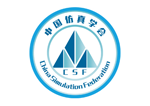Journal of System Simulation
Abstract
Abstract: The biomechanical response of human head and neck was studied to safeguard the helicopter aircrew in the traction escape process. A finite element model of human head and neck was established based on the Chinese pilot’s stature standard. The simulation and experiment results were compared to verify the validity of the model. The simulations under different period overload accelerations obtained from manikin traction aircrew escape experiment were performed to analyze the injuries of human head and neck in the processes of one shoulder traction and both shoulders traction. By an analysis of the head impact and acceleration, the simulation and experiment results are highly consistent. The results show that the head injury probability is small in the whole process, but the neck injury has remarkable increased probability at the rocket traction period in which the vertical peak acceleration load is about 15g (g here means acceleration of gravity).
Recommended Citation
Xing, Bohao; Zhou, Qianxing; Wang, Xingwei; and Yue, Yuan
(2019)
"Simulation Analysis of Head and Neck Injuries for Aircrew Escape System during Traction Rescue,"
Journal of System Simulation: Vol. 31:
Iss.
6, Article 22.
DOI: 10.16182/j.issn1004731x.joss.17-0178
Available at:
https://dc-china-simulation.researchcommons.org/journal/vol31/iss6/22
First Page
1208
Revised Date
2017-07-24
DOI Link
https://doi.org/10.16182/j.issn1004731x.joss.17-0178
Last Page
1215
CLC
V7
Recommended Citation
Xing Bohao, Zhou Qianxing, Wang Xingwei, Yuan Yue. Simulation Analysis of Head and Neck Injuries for Aircrew Escape System during Traction Rescue[J]. Journal of System Simulation, 2019, 31(6): 1208-1215.
DOI
10.16182/j.issn1004731x.joss.17-0178
Included in
Artificial Intelligence and Robotics Commons, Computer Engineering Commons, Numerical Analysis and Scientific Computing Commons, Operations Research, Systems Engineering and Industrial Engineering Commons, Systems Science Commons

